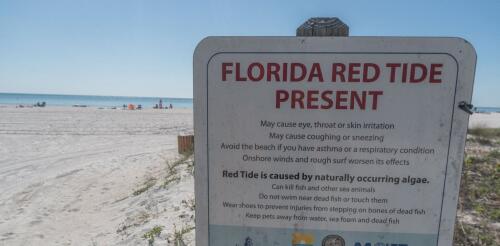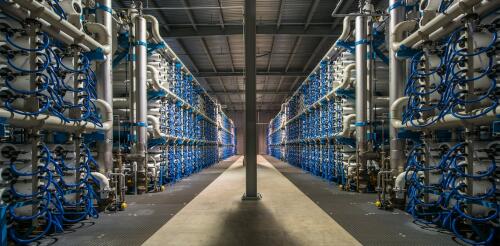Water pollution
Plunging into the ocean or a lake is one of the great joys of summer. But arriving at the beach to find water that’s green, red or brown, and possibly foul-smelling, can instantly spoil the party. As a toxicologist, I study health risks from both synthetic and natural substances. I’ve conducted research into early detection of harmful algal blooms, or HABs, which are an increasing threat to humans, animals and the environment. Toxins produced during these blooms have been implicated in human and animal illnesses in at least 43 states. Scientists have estimated that in the U.S. alone, freshwater HABs cause more than US$4.6 billion in damage yearly. Here’s what to know about them if you’re bound for the water’s edge this summer. Harmful algal blooms have become a regular occurrence along large stretches of Florida’s coast in recent years. Tiny organisms, big impacts Algae and cyanobacteria – often...
It’s expensive to pollute the water in Colorado. The state’s median fine for companies caught violating the federal Clean Water Act is over US$30,000, and violators can be charged much more. In Montana, however, most violators get barely a slap on the wrist – the median fine there is $300. Similarly, in Virginia, the typical Clean Water Act violation issued by the state is $9,000, while across the border in North Carolina, the median is around $600. Even federal penalties vary significantly among regions. In the South (EPA Region 6) the median Clean Water Act penalty issued by the U.S. Environmental Protection Agency regional office is $10,000, while in EPA Region 9 (including California, Nevada, Arizona and Hawaii), the median is over six times as high. We discovered just how startling the differences are in a new study, published in the Stanford Environmental Law Journal. My colleague Amy Vaughan and I reviewed 10 years of EPA data on penalties issued under...
The U.S. Supreme Court opens its new session on Oct. 3, 2022, with a high-profile case that could fundamentally alter the federal government’s ability to address water pollution. Sackett v. EPA turns on a question that courts and regulators have struggled to answer for several decades: Which wetlands and bodies of water can the federal government regulate under the 1972 Clean Water Act? Under this keystone environmental law, federal agencies take the lead in regulating water pollution, while state and local governments regulate land use. Wetlands are areas where land is wet for all or part of the year, so they straddle this division of authority. Swamps, bogs, marshes and other wetlands provide valuable ecological services, such as filtering pollutants and soaking up floodwaters. Landowners must obtain permits to discharge dredged or fill material, such as dirt, sand or rock, in a protected wetland. This can be time-consuming and expensive, which is why the case is of keen...
Coastal urban centers around the world are urgently looking for new, sustainable water sources as their local supplies become less reliable. In the U.S., the issue is especially pressing in California, which is coping with a record-setting, multidecadal drought. California Gov. Gavin Newsom recently released a US$8 billion plan for coping with a shrinking water supply. Along with water conservation, storage and recycling, it includes desalination of more seawater. Ocean desalination, which turns salt water into fresh, clean water, has an intuitive appeal as a water supply strategy for coastal cities. The raw supply of salt water is virtually unlimited and reliable. Ocean desalination is already a major water source in Israel and the United Arab Emirates. Cities in the Middle East, Australia, Mediterranean Europe, the U.S. Southwest and Australia also rely on it. There are more than 20 ocean desalination plants operating in California, plus a few in Florida. Many more plants acr...
About 23 million U.S. households depend on private wells as their primary drinking water source. These homeowners are entirely responsible for ensuring that the water from their wells is safe for human consumption. Multiple studies show that, at best, half of private well owners are testing with any frequency, and very few households test once or more yearly, as public health officials recommend. Even in Iowa, which has some of the strongest state-level policies for protecting private well users, state funds for free private water quality testing regularly go unspent. Is the water these households are drinking safe? There’s not much systematic evidence, but the risks may be large. The U.S. Environmental Protection Agency still relies on a 15-year-old study showing that among 2,000 households, 1 in 5 households’ well water contained at least one contaminant at levels above the thresholds that public water systems must meet. While other researchers have studied thi...




